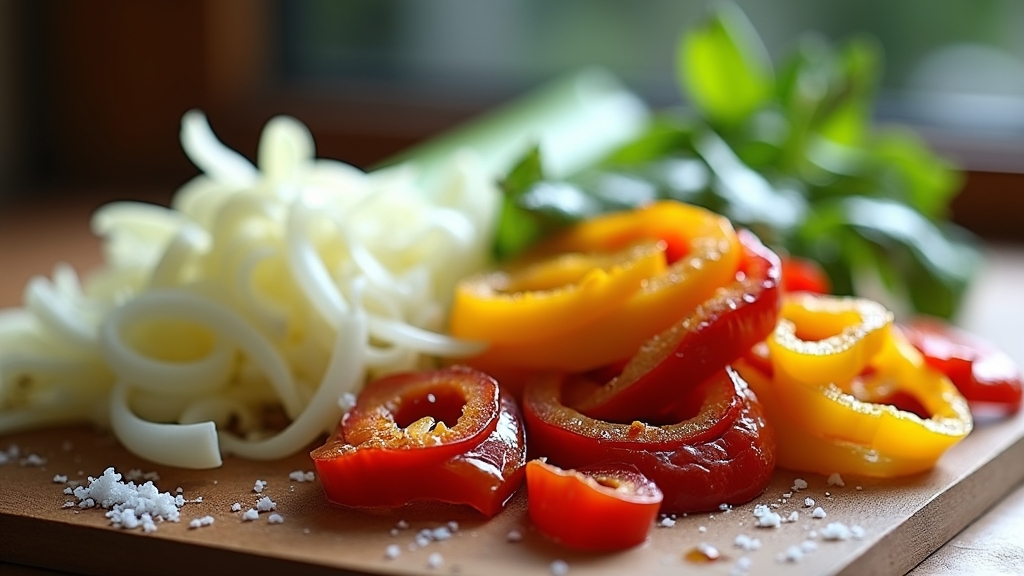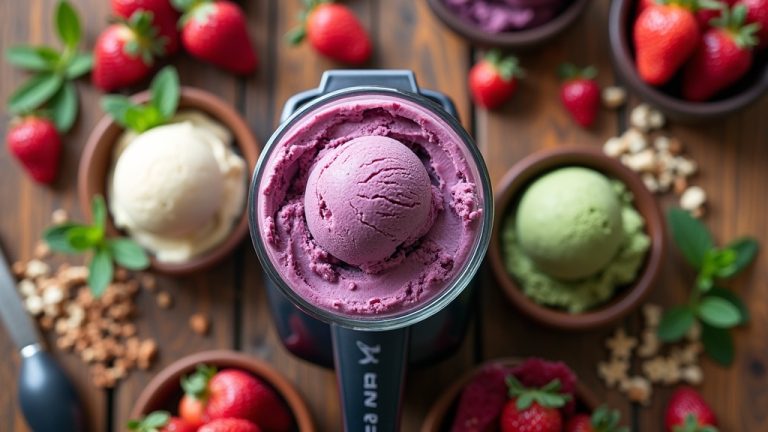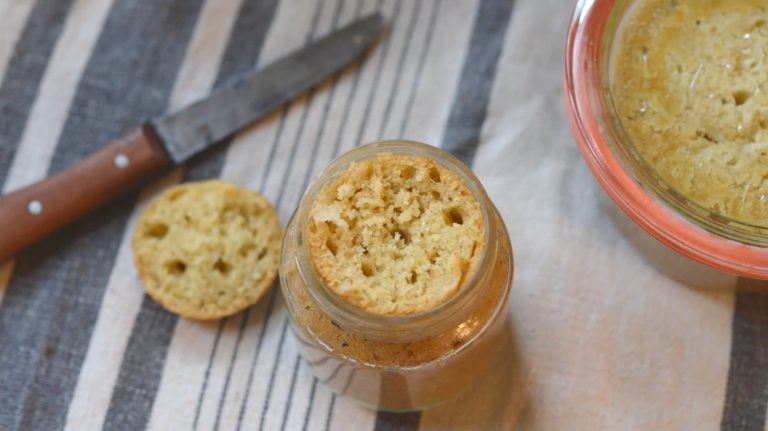Replacement for Mushrooms in Recipe: Smart Veggie Swaps
You can replace mushrooms with vegetables like eggplant or zucchini, which closely mimic their texture and absorb flavors well when sautéed.
Legumes such as chickpeas and lentils bring a dense, earthy bite plus added protein, but require prep adjustments.
Flavor-wise, dried mushroom powders combined with soy or miso provide umami depth without changing mouthfeel.
Selecting the right substitute depends on matching texture and moisture balance, plus applying roasting or caramelizing techniques for authenticity. Explore further techniques to optimize your mushroom-free dish.
Key Takeaways
- Eggplant, zucchini, and butternut squash replicate mushrooms’ texture and absorb flavors well when cooked properly in various dishes.
- Chickpeas and lentils provide protein-rich, earthy substitutes but require preparation adjustments like mashing or roasting.
- White button mushrooms serve as a direct 1:1 replacement with similar mild flavor and texture.
- Mushroom powder enhances umami flavor without altering texture, useful in seasoning blends and stocks.
- Grilling, sautéing, or roasting substitutes with umami seasonings mimics mushrooms’ characteristic taste and mouthfeel effectively.
Quick Reference Table for Mushroom Replacements
| Ingredients | Steps / Actions |
|---|---|
| 1 medium eggplant (cubed) | Sauté in olive oil over medium heat until golden brown and slightly crisp on edges (about 6–8 minutes). Drain excess moisture for firmer texture. |
| 1 zucchini (sliced) | Roast or grill at 400°F (200°C) for 10–12 minutes to achieve a lightly charred, mushroom-like bite. |
| ½ cup cooked chickpeas or lentils | Mash or lightly roast to replicate mushrooms’ dense mouthfeel. Add to sauces, stews, or meatless patties for extra protein. |
| 1 small onion or leek (chopped) | Caramelize slowly in butter or oil over low heat (45 minutes) until golden and jammy, enhancing umami depth. |
| 1 red bell pepper (sliced) | Sauté for 5–6 minutes to balance sweetness and texture. Combine with onions or leeks for a rounded flavor profile. |
| 1 tsp dried mushroom powder (optional) | Sprinkle into sauces, gravies, or stir-fries to boost umami without changing texture. |
| Soy sauce or miso paste | Mix with sautéed vegetables for added savory complexity. Adjust salt levels as needed. |
| Tofu or tempeh (optional) | Pan-sear for a chewy, meaty texture. Works best in stir-fries or as grilled slices in sandwiches. |
| Cooking oil, salt, and pepper | Season to taste during or after cooking to balance flavor and maintain desired moisture. |
Vegetable Substitutes That Mimic Mushroom Texture

While mushrooms have a unique texture that many dishes rely on, you can replicate their tactile qualities using certain vegetables like eggplant, zucchini, and squash.
Eggplant’s soft, fleshy texture closely mimics mushrooms when cooked properly. Avoid overcooking to prevent sogginess and maintain integrity, especially in duxelle preparations. It is important to drain excess moisture from eggplant to avoid watery dishes.
Zucchini offers a mild, slightly sweet flavor with a tender yet firm bite after high-heat sautéing. This creates a golden crust that enhances flavor depth while retaining a mushroom-like mouthfeel.
Butternut squash and pumpkin provide a firmer, earthier texture that withstands prolonged cooking without becoming mushy. This makes them ideal for soups or stews.
All three absorb surrounding flavors effectively, replicating mushrooms’ umami-enhancing role. By controlling cooking methods and timing, you can achieve a precise textural substitute for mushrooms using these vegetables.
Legumes and Pulses as Mushroom Alternatives
Because legumes and pulses offer firm textures and rich nutritional profiles, they serve as effective substitutes for mushrooms in many recipes. Their versatility allows them to complement a variety of dishes while enhancing overall kitchen functionality.
Chickpeas, used whole or mashed, provide a dense texture and can replace mushrooms on a 1:1 ratio, while lentils absorb flavors effectively and contribute earthy notes.
Nutritionally, legumes surpass mushrooms in protein, fiber, and micronutrients such as iron and B vitamins.
However, their longer cooking times and grainier texture necessitate pre-soaking and appropriate preparation methods like mashing or roasting. Additionally, legumes do not release moisture as mushrooms do, so adjust cooking times accordingly to avoid dryness.
Since legumes lack mushrooms’ umami, you’ll need to enhance flavor with complementary seasonings.
Despite these differences, legumes’ versatility enables their integration into various dishes, from stroganoff to meatless loaves, offering a nutritionally robust, cost-effective, and widely accessible mushroom alternative.
Onion, Leek, and Pepper Options for Flavor and Texture

Leeks are a fantastic choice if you’re looking to add a mild earthiness that really complements other flavors in your dish. They’ve this subtle quality that can enhance what you’re cooking without overpowering it. Using the right grind size for coffee can similarly enhance flavor extraction in brewing.
Now, when you caramelize onions, you’re in for a treat! This process brings out a rich, slightly sweet texture that really mimics that delicious umami flavor you often associate with mushrooms. It’s a game changer for depth in your meals.
And don’t forget about bell peppers! They bring a nice crisp sweetness that can really balance out the overall flavor and texture profile. Mixing them in can elevate your dish to a whole new level. These ingredients also align well with the traditional Greek cooking technique of lathero, where vegetables are cooked in olive oil and tomato, enhancing flavor and nutritional benefits. So, why not give these ingredients a try? You might just find your new favorite combination!
Leeks for Mild Earthiness
If you seek a mild earthiness to replace mushrooms, leeks offer a delicate balance of sweetness and subtle pungency that enhances dishes without overwhelming them. Their white and light green parts provide tenderness and a mild flavor, softening to a silky texture when sautéed or caramelized. Using appropriate kitchen tools such as microwave-safe bowls can help prepare leeks efficiently alongside other ingredients.
Though they lack mushroom’s meaty bite, leeks blend well in creamy dishes, risottos, and pastas. Additionally, leeks provide significantly more carbohydrates and calories than mushrooms, which can slightly enrich the energy content of your dish.
| Attribute | Comparison to Mushrooms |
|---|---|
| Flavor Profile | Sweeter, less pungent |
| Texture | Silky, softer, less firm |
| Nutritional Value | Higher carbs, lower protein |
Leeks excel as a mild, textural substitute, especially when combined with complementary ingredients to boost umami and complexity.
Caramelized Onions Texture
When caramelizing onions, achieving the ideal texture requires careful control of heat and slicing technique. You want evenly cut slices along the grain to preserve shape and avoid mushiness. Choosing the right cookware can also impact moisture retention and heat distribution, which enhances the caramelization process and texture.
Slow stovetop caramelization over 45–60 minutes yields a thick, jam-like consistency with copper to bronze hues, essential for rich texture and visual appeal. Avoid shortcuts like baking soda, which create a creamier, spreadable texture but lose structural integrity. Using baking soda can accelerate caramelization but changes the texture significantly.
Maintain adequate pan fullness to retain moisture, promoting softness without collapse. Using yellow onions balances sweetness and firmness, while sweet onions caramelize faster but soften more. For serving, consider heat-resistant bowls to maintain the ideal temperature and texture of caramelized onions.
Shallots offer a delicate alternative with tender texture. Steer clear of slow cooker methods; they produce swollen, mushy onions lacking the characteristic jammy texture you need for a satisfying replacement in recipes.
Bell Peppers Sweetness
Caramelized onions provide a soft, jam-like texture with deep sweetness, but to replicate both flavor and texture complexity in a mushroom substitute, bell peppers offer a compelling alternative. Their natural moisture content also helps maintain a tender consistency when cooked, similar to mushrooms.
As bell peppers ripen, their sugar content rises, particularly in red varieties, producing a pronounced sweetness with fruity and citrusy undertones. This sweetness contrasts with the more pungent, less sweet profiles of onions and leeks, making bell peppers ideal when you want milder, fresher notes. Green, yellow, orange, and red peppers ship well even if not locally grown, so you can find quality bell peppers year-round to suit your cooking needs.
Additionally, their crunchy texture varies with cooking method, allowing you to mimic mushrooms’ firmness or softness. By selecting ripe, colorful bell peppers, you enhance your dish’s flavor balance. Using a non-stick surface during cooking can help preserve the peppers’ texture and prevent sticking.
Integrating these with caramelized onions or leeks further harmonizes sweetness and texture, effectively replacing mushrooms in recipes that demand nuanced vegetal complexity.
Using Dried Mushroom Powders and Umami Enhancers
Although fresh mushrooms offer distinct textures, dried mushroom powders provide a concentrated umami boost that enhances savory profiles without altering mouthfeel. Using umami enhancers alongside mushroom powders can create a more versatile flavor profile suited to various dishes.
You can create fine mushroom powders by thoroughly dehydrating mushrooms until brittle, then grinding them with spice or coffee grinders. Proper airtight storage in cool, dark conditions preserves quality for up to six months. Additionally, utilizing mushroom scraps and stems for powder production supports waste reduction and sustainable kitchen practices.
To maximize flavor, pair mushroom powders with umami enhancers like soy sauce, miso, or nutritional yeast.
Consider these applications:
- Sprinkle mushroom powder on bread or incorporate into ground meat for subtle umami enhancement.
- Blend powders with dried herbs and salt to form complex seasoning blends.
- Use mushroom liquor strained from soaking to enrich stocks and sauces.
- Integrate powders into spice rubs or gluten-free thickeners to add depth without texture change.
Specific Mushroom Varieties to Replace Cremini Mushrooms
If you’re looking to swap out cremini mushrooms in your dishes, white button mushrooms are a great option. They’ve a milder flavor and a similar texture, so you can use them in a 1:1 substitution ratio without any worries.
Now, if you’re in the mood for something with a bit more oomph, consider using portobello mushrooms. They’re essentially the grown-up version of cremini mushrooms, offering a robust, meaty profile. Just keep in mind that you might need to adjust the size a bit to keep everything consistent in your dish.
And then there are oyster mushrooms! They bring a softer texture and a milder taste to the table. They’re perfect for sautéing or roasting, especially when you want to keep the flavor less earthy. Oyster mushrooms should be added towards the end of cooking because of their delicate flavor.
White Button Alternatives
When seeking a direct substitute for cremini mushrooms, white button mushrooms are a practical choice due to their similar size, texture, and availability.
Although milder in flavor, you can enhance their richness with appropriate spices and seasonings. Their firm texture makes them ideal for slicing and sautéing alongside garlic and butter. White button mushrooms can also be used in uncooked preparations, similar to how pizza sauce is uncooked, to preserve their fresh taste.
Use a 1:1 substitution ratio because of comparable moisture content.
Key considerations include:
- White buttons are younger creminis, offering a subtler taste but parallel texture.
- Widely accessible year-round in supermarkets, ensuring consistent supply. They are grown in controlled environments, which allows for this year-round availability.
- Flavor amplification through seasoning bridges the gap with cremini’s earthiness.
- Their adaptability suits various cooking methods, maintaining structural integrity in dishes.
This makes white buttons a reliable, straightforward alternative when cremini mushrooms aren’t available.
Portobello and Oyster
Since portobello and oyster mushrooms differ considerably from cremini mushrooms in flavor, texture, and growth characteristics, selecting the appropriate variety depends on your recipe’s requirements.
Portobellos offer a robust umami flavor and dense, meaty texture, ideal for grilling or stuffing. Oysters provide a mild, slightly sweet taste with a tender yet chewy texture, suitable for sautés and stir-fries.
Choosing the right cookware, such as a pan with even heat distribution, can enhance the cooking process when preparing these mushrooms.
| Attribute | Portobello |
|---|---|
| Flavor | Strong umami, earthy |
| Texture | Dense, meaty, juicy |
| Culinary Use | Grilling, stuffing, large cuts |
| Handling | Clean with damp cloth |
| Attribute | Oyster |
| Flavor | Mild, slightly sweet |
| Texture | Tender, slightly chewy |
| Culinary Use | Stir-fries, sautés, clusters |
| Handling | Tear into pieces |
Considering Texture When Choosing a Mushroom Replacement
Although mushrooms offer a range of textures—from soft and meaty to rubbery and crunchy—selecting an effective replacement requires careful analysis of these textural properties. Considering tools like a food mill can help achieve the desired texture when processing some substitutes.
Mushrooms bring diverse textures, making thoughtful substitution key to preserving dish integrity.
You need to contemplate moisture content, cooking methods, and how texture transforms during preparation. Mushrooms are approximately 92% water, which significantly impacts their cooking behavior and texture, so understanding this high water content is essential when choosing a substitute.
To choose the right substitute, evaluate these factors:
- Crunchiness: Opt for breaded vegetables, fried tofu, or roasted chickpeas to replicate crispy exteriors.
- Softness/Meatiness: Use grilled eggplant, jackfruit, or Portobello squash for tender, dense textures.
- Rubbery Texture: Ingredients like tofu or tempeh can simulate the chewiness found in wood ear mushrooms.
- Moisture Balance: Avoid early oil addition to prevent sogginess and maintain the desired texture. Using kitchen tools such as a potato ricer can also aid in managing moisture and achieving smoother consistencies in certain replacements.
This analytical approach ensures your replacement matches the original mushroom’s textural role precisely.
Flavor Profiles to Match When Substituting Mushrooms
Because flavor defines much of a mushroom’s culinary role, matching its distinct profiles is essential when selecting a substitute.
You need to identify whether the recipe calls for earthy umami, nutty savory, or smoky charred notes. For earthy umami, ingredients like seaweed, miso paste, or truffle oil replicate shiitake-like depth. Proper preparation and cleaning of these ingredients can enhance their flavor impact and safety.
Nutty and savory alternatives include lentils, barley, or tempeh, offering complementary flavor and firmness.
To resemble smoky and charred characteristics, incorporate smoked paprika, chipotle peppers, or grilled vegetables. Grilling mushrooms over medium heat for a few minutes per side helps achieve tender, slightly charred mushrooms with a smoky depth.
Additionally, neutral bases such as tofu and cauliflower absorb seasonings effectively, allowing precise flavor control. Maintaining consistent kitchen safety practices while handling ingredients ensures the best cooking experience.
Employing these options strategically ensures your substitute maintains the original dish’s flavor integrity without mushrooms.
Avoid overlooking the specific flavor profile, as mismatches can alter the dish’s intended taste and complexity.
Cooking Techniques to Replicate Mushroom Characteristics
When replicating mushroom characteristics, mastering cooking techniques is essential to achieving similar texture, flavor, and moisture balance. You need to manipulate heat, moisture, and surface reactions carefully to mimic mushroom qualities effectively.
- Roasting at ~400°F induces dehydration and Maillard browning, producing a crispy, meatier texture. This method is especially effective when mushrooms are coated with oil and seasoned with spice mixes like paprika and cumin to enhance flavor development and caramelization.
- Sautéing with moisture evaporation prevents sogginess by releasing and evaporating water before adding fats, preserving firmness. Seasoning the mushrooms in a bowl with a blend of spices such as cinnamon, cayenne, and garlic powder before cooking can intensify the umami profile.
- Caramelizing sugars through prolonged cooking deepens umami and creates complex flavor layers. Incorporating a glaze made from maple syrup, mushroom stock essence, lime juice, and molasses, then reducing it to a syrupy consistency, adds richness and complexity to the dish.
- Grilling large pieces adds smoky char and intensifies earthy notes, replicating mushroom’s robust profile. Alternating skewers of oyster and portobello mushrooms brushed with glaze during grilling achieves a charred, glazed appearance that enhances both flavor and texture.
Apply these precise thermal and moisture controls to simulate mushrooms’ unique mouthfeel and flavor, ensuring each bite delivers the expected sensory experience.
Balancing Moisture and Protein in Mushroom-Free Recipes
Achieving the right balance of moisture and protein is critical when formulating mushroom-free recipes that maintain the desired texture and nutritional profile.
Mushrooms’ high water content (~90%) ensures moistness, while their protein, rich in essential amino acids and highly bioavailable (60-70% digestibility), supports nutritional value.
To replicate this, combine hydrating ingredients like zucchini or eggplant with protein-dense sources such as tofu, tempeh, or legumes. These provide essential amino acids while retaining moisture, aided by polysaccharides and fibers that bind water during cooking.
Mushrooms also contain beneficial fibers like beta-glucans which contribute to satiety and texture in recipes.
Avoid protein sources with low digestibility or enzyme inhibitors.
Incorporate broths or fermented liquids to enhance juiciness and mouthfeel.
This strategic pairing ensures you achieve a texture and protein profile comparable to mushrooms, optimizing both sensory qualities and nutritional adequacy in your mushroom-free dishes.
Frequently Asked Questions
Can Mushrooms Be Replaced in Raw Dishes Like Salads?
Yes, you can substitute mushrooms in raw dishes like salads by using thinly sliced zucchini, raw bell peppers, or finely chopped cauliflower to mimic texture.
Adding walnuts blended with shredded carrots helps replicate the meaty consistency you’d expect.
Since mushrooms provide umami, you’ll want to compensate with nutritional yeast or fermented dressings.
Combining these alternatives and adjusting acidity and seasoning guarantees your salad maintains balanced flavor and mouthfeel without raw mushrooms.
Are There Any Allergen Concerns With Common Mushroom Substitutes?
Yes, you need to take into account allergen risks with mushroom substitutes.
Fungal-based options like tempeh or mycoprotein products may trigger cross-reactivity due to shared fungal proteins, potentially causing allergic reactions if you’re mushroom-sensitive.
Conversely, plant-based substitutes such as eggplant, zucchini, or tofu generally pose minimal allergenic risk.
Always evaluate each substitute’s fungal content and processing method carefully to avoid hypersensitivity, especially if you have a documented mushroom allergy.
How Do Mushroom Substitutes Affect Recipe Cooking Times?
Mushroom substitutes impact cooking times based on their moisture and texture.
Protein-based options like tempeh need longer cooking or pre-pressing to reduce water content.
Vegetables with high water content like zucchini require extended sautéing to avoid sogginess.
Dried mushrooms or powders integrate quickly, minimally altering timing.
Denser substitutes may require pre-cooking or longer heat exposure.
Adjust your recipe steps and ratios carefully to maintain desired texture and flavor without overcooking.
What Are the Best Mushroom Substitutes for Grilling Recipes?
Imagine your grill sizzling, and oyster mushrooms’ meaty texture perfectly mimics that experience.
For grilling, you want portobellos for their dense, moisture-retaining caps. Shiitakes provide smoky umami, while king oysters sliced like steaks hold shape well.
Maitake clusters crisp beautifully, giving texture variety. If mushrooms aren’t available, eggplant, cauliflower steaks, tofu, or tempeh work technically well.
They absorb marinades and grill evenly without compromising structure or flavor intensity.
Can Mushroom Replacements Provide the Same Nutritional Benefits?
No, most mushroom replacements can’t match their full nutritional profile.
Mushrooms uniquely provide complete proteins with all essential amino acids, vitamin D, and antioxidants like ergothioneine.
While alternatives like tofu or seitan offer protein, they often lack certain micronutrients or bioactive compounds mushrooms supply.
You’ll need to combine other foods strategically to replicate mushrooms’ balanced amino acids, vitamins, and heart-healthy fats for equivalent nutritional benefits.
Transform Every Meal with Smart Mushroom Alternatives
Think of mushrooms as the culinary chameleons of your dish. When you replace them, you’re not just swapping ingredients; you’re engineering texture, flavor, and moisture.
By selecting precise vegetable substitutes, legumes, or umami enhancers, you can replicate mushroom’s unique profile with scientific accuracy. Balancing these elements guarantees your recipe maintains its structural integrity and taste complexity. This proves that with the right choices, mushroom-free cooking can achieve equally sophisticated results.







